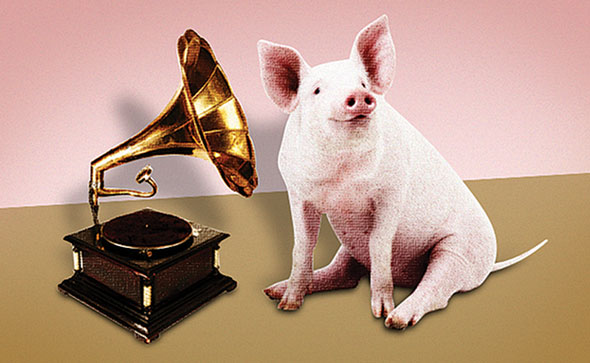Physicist revives oldest recording of the human voice
 |
| Photo-illustration: Sandbox Studio |
In 1860, Parisian inventor Édouard-Léon Scott de Martinville set out to capture the beauty of a French folk song, "Au Clair de la Lune," using pig hair and soot.
He had a singer croon into a speaking horn, sending sound waves into a diaphragm. This vibrated a stylus—a hair plucked from a pig's ear—that scratched wavy lines into soot-covered paper.
Scott never intended to play back his recording. His apparatus, called a phonoautograph, was meant to preserve only a paper record of sound vibrations; Thomas Edison would not invent the phonograph until 17 years later.
So it was all the more remarkable when particle physicist Carl Haber of Lawrence Berkeley National Laboratory pulled the sound from Scott's soot-covered paper and brought the snippet of song back to life in March 2008. It was the earliest recording of the human voice ever successfully played back.
"It has been a really great way to use physics and technology to impact other areas of society," Haber says of his technique, which sprang from computer algorithms and imaging methods used to design particle detectors for CERN, the European particle physics center.
Giving voice to Scott's recordings is the latest of Haber's contributions to the preservation of historic sound. Currently, he's digitizing and recording turn-of-the-century stories and songs in Native American dialects, some now extinct, that had been captured on 3000 cylinders stored at the University of California, Berkeley.
The challenge is to restore those sounds without damaging their delicate cylinders of wax, foil, shellac, lacquer, or plastic. To do that, Haber takes a 3-D, high-resolution photo of the cylinder's grooves, which reflect various wavelengths, or colors, of light. Each color comes into focus at a different depth, allowing Haber to plot the topography of the area inside the grooves within a fraction of a hair's width.
A computer translates the images into sound pitches and durations. It also filters out damage to reduce static, remove skips, and fill in portions that are chipped, moldy, or worn, creating the equivalent of a retouched photograph.
Haber says that when the US Library of Congress finishes constructing a new center to store the world's sound recordings, he will move his imaging machine there.
You can hear Scott's recording, and others restored by Huber and his colleagues, at firstsounds.org.
Tona Kunz
Click here to download the pdf version of this article.






